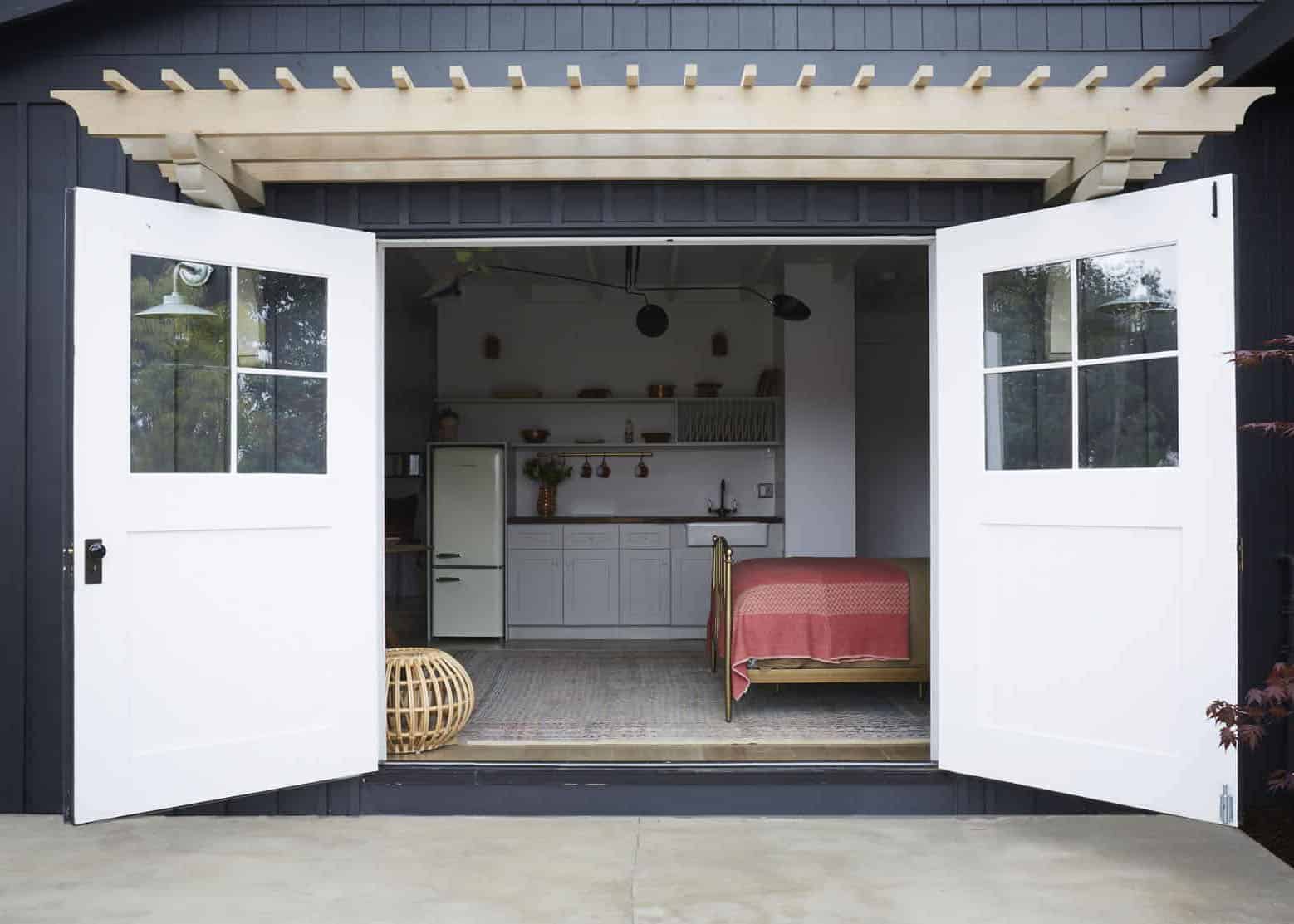Converting a garage into a living space can be an excellent way to add more room to your home without the cost and hassle of building an addition. Whether you want a new guest room, a home office, or an entertainment area, a garage conversion can provide the perfect solution.
However, transforming your garage into a livable space isn’t just about redecorating; it involves careful planning, ensuring compliance with local regulations, and making the necessary structural changes.
This guide will walk you through the entire process, from understanding zoning laws to finishing touches, so you can legally and efficiently convert your garage into a comfortable and functional living area.
1. Understanding the Legal Requirements
Before starting any renovation, it’s crucial to understand the legal requirements in your area. Converting a garage into a living space is typically subject to building codes, zoning laws, and homeowner association (HOA) rules. Here’s how to navigate these requirements:
- Check Local Zoning Laws: Zoning laws vary by location and determine whether you can convert your garage into living space. Contact your local planning department to find out if garage conversions are allowed in your area and if there are any specific restrictions.
- Obtain Necessary Permits: You will need a building permit for any structural changes, electrical work, plumbing, or mechanical installations. The process may require submitting detailed plans, paying fees, and scheduling inspections.
- Review Homeowner Association Rules: If you live in a community governed by a homeowner association, check its rules regarding garage conversions. Some HOAs have specific guidelines or may not allow conversions at all.
2. Planning Your Garage Conversion
Once you have a clear understanding of the legal requirements, start planning your conversion. Consider the following:
- Define the Purpose of the Space: Determine how you want to use the newly converted space – a bedroom, office, gym, or rental unit. This will influence the design, layout, and necessary modifications.
- Create a Budget: List all potential expenses, including permits, materials, labor, and furnishings. Having a detailed budget will help you avoid overspending.
- Hire a Professional Designer or Architect: Consulting with a professional can ensure your plans meet building codes and maximize the use of space. They can also help create a design that complements the rest of your home.
3. Ensuring Proper Insulation and Ventilation
Garages are not typically designed to be living spaces, so proper insulation and ventilation are essential for comfort and energy efficiency.
- Insulate Walls and Ceilings: Add insulation to walls, ceilings, and doors to maintain a comfortable temperature year-round. Consider using spray foam or fiberglass insulation, depending on your climate and budget.
- Install Proper Ventilation: Adequate ventilation is crucial to prevent moisture buildup and ensure good air quality. This may involve adding windows, exhaust fans, or even extending your home’s HVAC system into the garage.
- Seal Gaps and Cracks: Ensure that any gaps, cracks, or drafts are sealed to maintain temperature control and reduce energy costs.
4. Modifying the Structure
Converting a garage into a living space requires several structural changes to meet building codes and create a comfortable environment.
- Flooring: Most garages have concrete floors, which are not ideal for living spaces. Consider installing flooring such as hardwood, laminate, carpet, or tile to improve comfort and aesthetics.
- Windows and Doors: Install new windows to provide natural light and ventilation. You may also need to replace or modify the existing garage door with a more insulated and weather-tight option.
- Walls and Ceilings: Add drywall to cover exposed studs and create a finished look. You may also need to adjust ceiling height to meet building code requirements, especially if your garage has a lower ceiling.
- Electrical Upgrades: Garages usually have limited electrical outlets and lighting. You may need to hire a licensed electrician to install additional outlets, light fixtures, and upgrade the electrical panel to handle the increased load.
- Plumbing Modifications: If you plan to add a bathroom or kitchenette, you will need to extend plumbing lines into the garage. This may require digging trenches for pipes and connecting to your home’s main water supply and sewer system.
5. Meeting Building Code Requirements
To ensure safety and legality, your converted space must meet local building code requirements. Common requirements include:
- Ceiling Height: Most building codes require a minimum ceiling height of 7-8 feet for living spaces.
- Egress Windows: If you are converting the garage into a bedroom, you will need to install egress windows for emergency exits.
- Smoke and Carbon Monoxide Detectors: Install smoke detectors and carbon monoxide detectors in the converted space for safety.
- Fire Safety Measures: Ensure that the new living space has adequate fire protection, including fire-rated walls and doors, especially if the garage is attached to your home.
6. Managing Utilities and Energy Efficiency
Converting a garage into a living space means you will need to consider utilities such as heating, cooling, water, and electricity.
- Extending HVAC Systems: Connect the converted garage to your existing heating and cooling system. This may involve extending ducts or installing a separate system, such as a mini-split air conditioner.
- Upgrading Electrical Systems: Upgrade the electrical wiring to handle the additional load of appliances, lighting, and outlets. An electrician can help determine if the current wiring is sufficient or if an upgrade is needed.
- Installing Water Lines: For bathrooms or kitchens, run water lines to the new space. This could require trenching, which may add to the project’s complexity and cost.
- Improving Energy Efficiency: Install energy-efficient windows, doors, and insulation to reduce energy costs and improve comfort. Consider adding solar panels or other sustainable energy sources.
7. Interior Design and Finishing Touches
Now comes the fun part – designing the interior to make your new living space functional and attractive.
- Choosing Flooring: Select a flooring type that suits the intended use of the space. For example, carpet for a bedroom or hardwood for a family room.
- Painting and Decorating: Choose colors and decor that create a cohesive look with the rest of your home. Use light colors to make the space feel larger and brighter.
- Furniture and Storage Solutions: Invest in furniture that maximizes space, such as multi-functional pieces or built-in storage solutions.
- Lighting: Install a mix of ambient, task, and accent lighting to create a comfortable and versatile environment.
8. Maximizing Space and Comfort
Garages often have limited square footage, so maximizing the available space is crucial.
- Use Vertical Space: Install shelving, wall hooks, and cabinets to make use of vertical space. This is especially important if you’re converting the garage into a smaller living area, like a studio apartment.
- Incorporate Multi-Functional Furniture: Consider furniture that serves multiple purposes, such as a sofa bed, fold-out desk, or ottoman with storage.
- Open Up the Floor Plan: Removing unnecessary barriers can make the space feel larger and more open. For example, consider an open-plan kitchen and living area instead of separating the two.
9. Ensuring Accessibility
If you plan to use the converted garage as a rental unit or for elderly family members, consider accessibility features:
- Ramps and Wider Doorways: Ensure entrances are accessible for all, including those using wheelchairs or walkers.
- Lever-Style Door Handles: Install door handles that are easier to operate for people with limited hand strength.
- Barrier-Free Showers: If adding a bathroom, consider a barrier-free shower design for ease of use.
10. Getting the Space Inspected
Once the renovation is complete, you will need to schedule inspections to ensure that the conversion meets all safety and building code requirements.
- Arrange for a Building Inspection: Contact your local building department to schedule an inspection. Be prepared to show that all work complies with the building code, zoning laws, and permit requirements.
- Pass Final Inspection: Make any necessary adjustments based on the inspector’s feedback. Once your conversion passes the final inspection, you will receive a certificate of occupancy.
11. Financing Your Garage Conversion
Converting a garage can be costly, especially if structural changes, electrical, and plumbing work are required. Here are some financing options:
- Home Equity Loans: Use the equity in your home to finance the renovation.
- Personal Loans: Obtain a personal loan to cover conversion costs. Compare rates and terms from different lenders.
- Cash Savings: If possible, use cash savings to avoid interest and debt.
- Government Grants: In some areas, grants or incentives are available for home renovations that improve energy efficiency or add affordable housing.
12. Renting Out the Converted Space
If your goal is to rent out the newly converted space, there are additional steps to consider:
- Check Local Rental Regulations: Ensure that renting out the converted garage complies with local laws. Some municipalities have restrictions on rental properties, including minimum lease lengths or occupancy limits.
- Market the Space: List your rental property online, provide quality photos, and highlight the benefits of the location and features.
- Screen Tenants Carefully: Conduct background checks and verify references to find reliable tenants.
13. Common Challenges and Solutions
Converting a garage to a living space comes with challenges. Here are a few common issues and solutions:
- Low Ceilings: If your garage has low ceilings, consider raising them or using creative design solutions like lower-profile furniture and vertical stripes on walls to create the illusion of height.
- Limited Natural Light: Add windows or skylights to brighten the space. Alternatively, use light-colored paints and mirrors to reflect light.
- Poor Insulation: Insulate walls, ceilings, and floors to keep the space comfortable and energy-efficient.
14. Benefits of Converting a Garage
There are several benefits to converting your garage into a living space:
- Increased Home Value: A well-executed garage conversion can add value to your home.
- Additional Living Space: Gain more room for your growing family or create a dedicated space for hobbies and work.
- Potential Rental Income: Use the space to generate rental income by creating a self-contained unit.
Conclusion
Converting a garage into a living space is a great way to maximize the use of your home. By understanding the legal requirements, planning carefully, and following the necessary steps, you can transform your garage into a comfortable, functional area that suits your needs.
Remember to consult professionals where necessary, obtain the right permits, and follow building codes to ensure a safe and compliant conversion.
With careful planning and attention to detail, your garage can become a valuable extension of your home, providing additional living space or even generating extra income.




